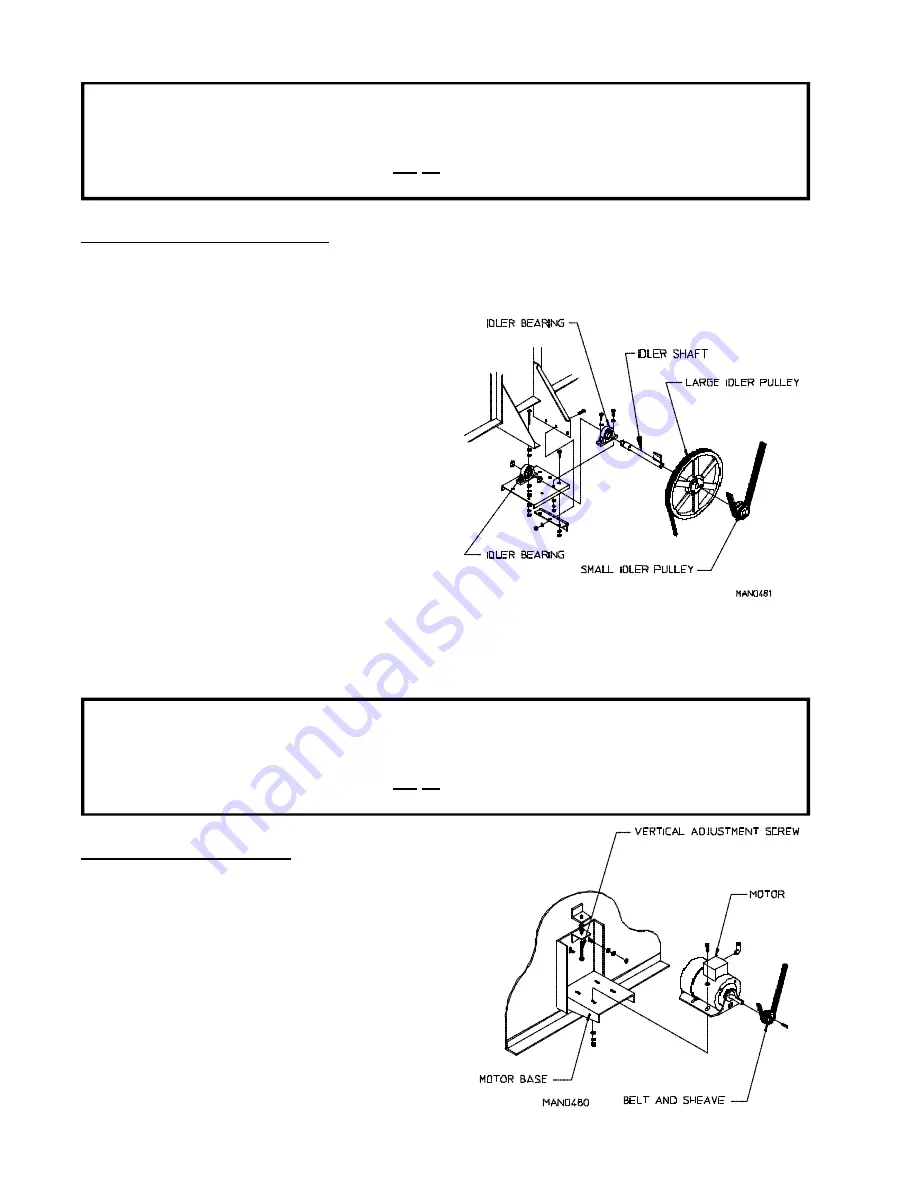
28
IMPORTANT:
Tighten screws evenly and progressively. Never allow the sheave to be drawn in
contact with the flange of the bushing. This gap should measure from 1/8” to 1/4”.
Proper cap screw torque is 6 ft-lbs. (26.6 newtons), if greater tightening forces are
applied, excess pressures
will
be
created in the hub of the mounted sheave which may
cause it to crack.
To Replace Large Idler Pulley
1. Loosen V-belts. Rotate pulley and roll V-belts out of grooves.
2. Remove cap screws from the bushing.
3. Insert cap screws in tapped removal holes and
tighten evenly until bushing becomes loose on
shaft. (Refer to figure “A” on the previous page.)
4. Remove bushing, pulley, and key.
5. Assemble bushing and sheave as shown in figure
“B” on the previous page. When cap screws
are loosely inserted, bushing remains fully
expanded to provide a sliding fit on the shaft.
6. Insert key on the shaft, then slide sheave to
desired position with cap screw heads to the
outside.
7. Tighten cap screws progressively. There should remain a gap between the sheave hub and the flange of
the bushing.
IMPORTANT:
Tighten screws evenly and progressively. Never allow the sheave to be drawn in
contact with the flange of the bushing. This gap should measure from 1/8” to 1/4”.
Proper cap screw torque is 15 ft-lbs (66.7 newtons). If greater tightening forces are
applied, excess pressures
will
be
created in the hub of the mounted sheave which may
cause it to crack.
To Replace Motor Pulley
1. Loosen V-belts. Rotate pulley and roll V-belts out
of grooves.
2. Remove cap screws from the bushing.
3. Insert cap screws in tapped removal holes and tighten
evenly until bushing becomes loose on shaft. (Refer
to figure “A” on the previous page.)
4. Remove bushing, pulley, and key.
Summary of Contents for AD-758
Page 61: ...ADC 450418 1 06 16 02 20 ...
















































